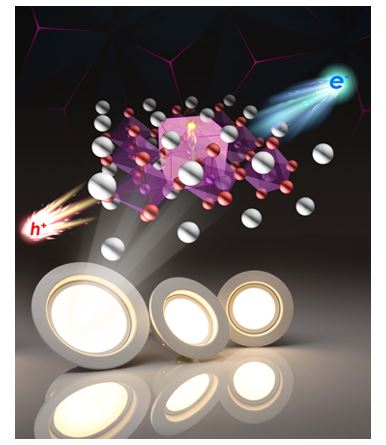Video Article Open Access
Emerging Organic and Perovskite Photovoltaic Devices for Indoor Applications
Fang-Chung Chen1,2,*, Ming-Ju Wu1, Chien-Chen Kuo1, Shun-Shing Yang1, Zong-Chun Hsieh1
1Department of Photonics, National Yang Ming Chiao Tung University, Hsinchu, 30010, Taiwan
2Center for Emergent Functional Matter Science, National Yang Ming Chiao Tung University, Hsinchu, 30010, Taiwan
Vid. Proc. Adv. Mater., Volume 2, Article ID 2110234 (2021)
DOI: 10.5185/vpoam.2021.10234
Publication Date (Web): 21 Jul 2022
Copyright © IAAM
Graphical Abstract

Abstract
Conventional photovoltaic devices, such as crystalline Si cells, exhibit poor efficiency under indoor or low-level outdoor lighting. Many applications, however, require efficient, low-cost light harvesting ability under dim-light conditions, e.g., wireless sensor nodes in home security and automation etc. Therefore, while Si panels dominate the solar panel market, there remains a need for developing of low-cost photovoltaic technology which can efficiently harvest photon energy under indoor or low-level lighting conditions. In this talk, we will present our recent progress on the development of organic and organic/inorganic hybrid perovskite solar cells especially for indoor applications. In particular, we have found that these photovoltaic devices exhibited extremely high performance under the indoor illumination conditions, thereby making them suitable for low-power indoor applications. Overall, PCE values higher than 20% are achievable under illumination of low-power indoor light sources. Further, assuming the radiative recombination would be the only loss mechanism, we calculated the Shockley–Queisser (SQ) limits using two representative indoor light sources (fluorescent tube and white light-emitting diodes). The results reveal an unusual zone, where the dependences of the PCEs on the band gap (Eg) under illumination of indoor lighting sources exhibit different trend from that under solar irradiation. Following the calculation results, we enlarge the Eg of perovskite materials, thereby increasing the PCEs of perovskite solar cells under indoor lighting conditions. The details of the SQ limits and device characterization under illumination of indoor light sources will be described. For polymer photovoltaic devices (OPVs), we found that increasing the open-circuit voltage (Voc) of the OPV devices is the most critical factor for achieving high device performance for low-power indoor applications. Therefore, the device power output will be maximized if we could obtain a larger energy difference between the highest occupied molecular orbital of the polymer donor and the lowest unoccupied molecular orbital of the electron acceptor, thereby ensuring a high value of Voc. Finally, different methods for further enhancing the device performance, such as introduction of metal nanoparticles for triggering plasmonic effects upon illumination, will be also discussed.
Keywords
Polymer; perovskite; photovoltaic; indoor; solar cells.
Acknowledgement
We thank the Ministry of Science and Technology, Taiwan and the Ministry of Education (MOE), Taiwan (SPROUT Project-Center for Emergent Functional Matter Science of National Yang Ming Chiao Tung University) for financial support.
References
- S. S. Yang, Z. C. Hsieh, M. L. Keshtov, G. D. Sharma, F. C. Chen, Solar RRL, 2017, 1, 1700174.
- N. W. Teng, S. S. Yang, F. C. Chen, IEEE Journal of Photovoltaics, 2018, 8, 752.
- F. C. Chen, Advanced Optical Materials, 2019, 7, 1800662.
- M. J. Wu, C. C. Kuo, L. S. Jhuang, P. H. Chen, Y. F. Lai, F. C. Chen, Adv. Energy Mater. 2019, 9, 1901863.
Video Proceedings of Advanced Materials

Upcoming Congress



